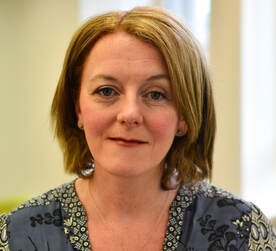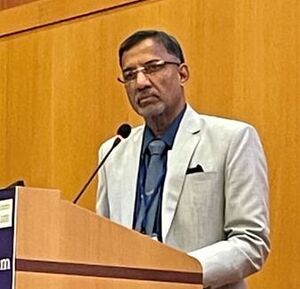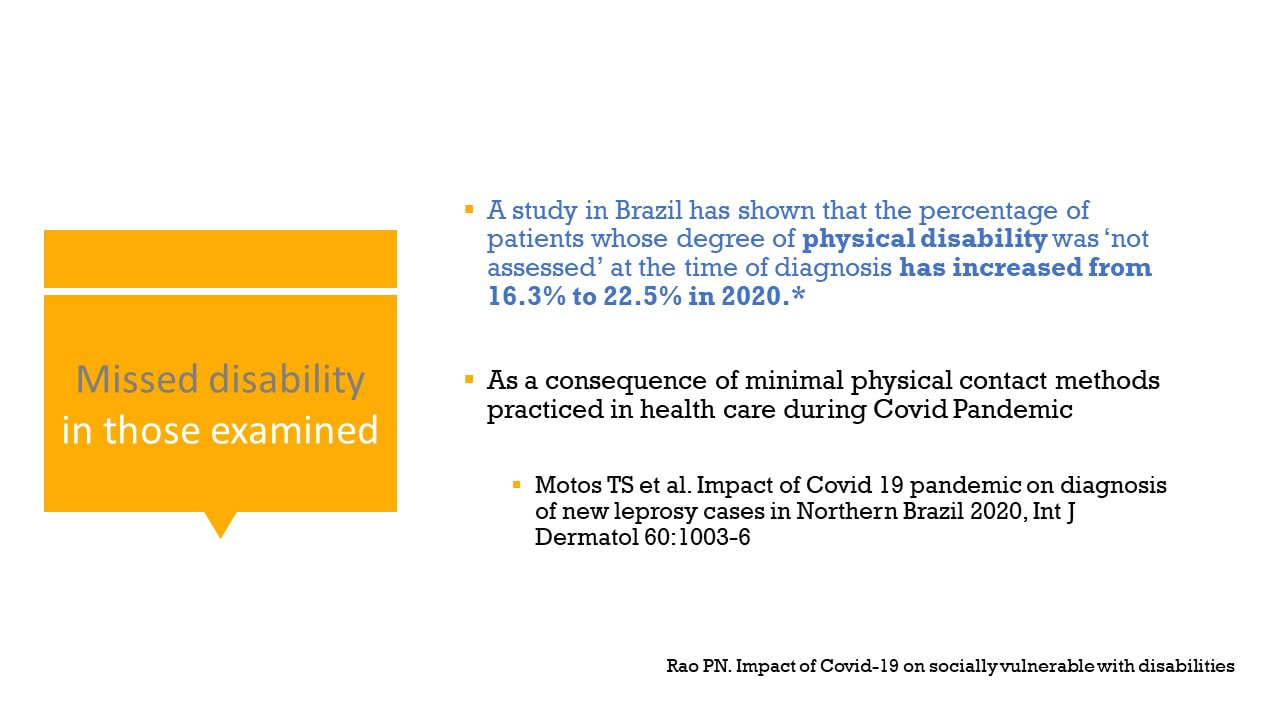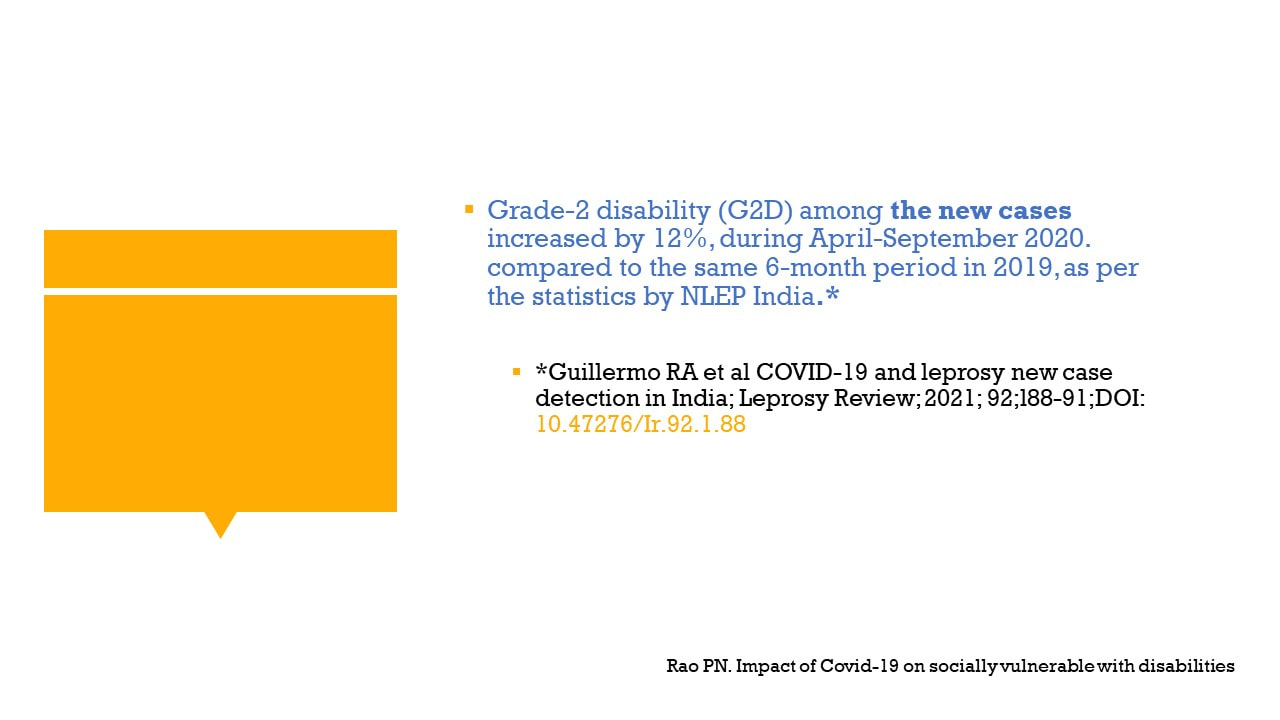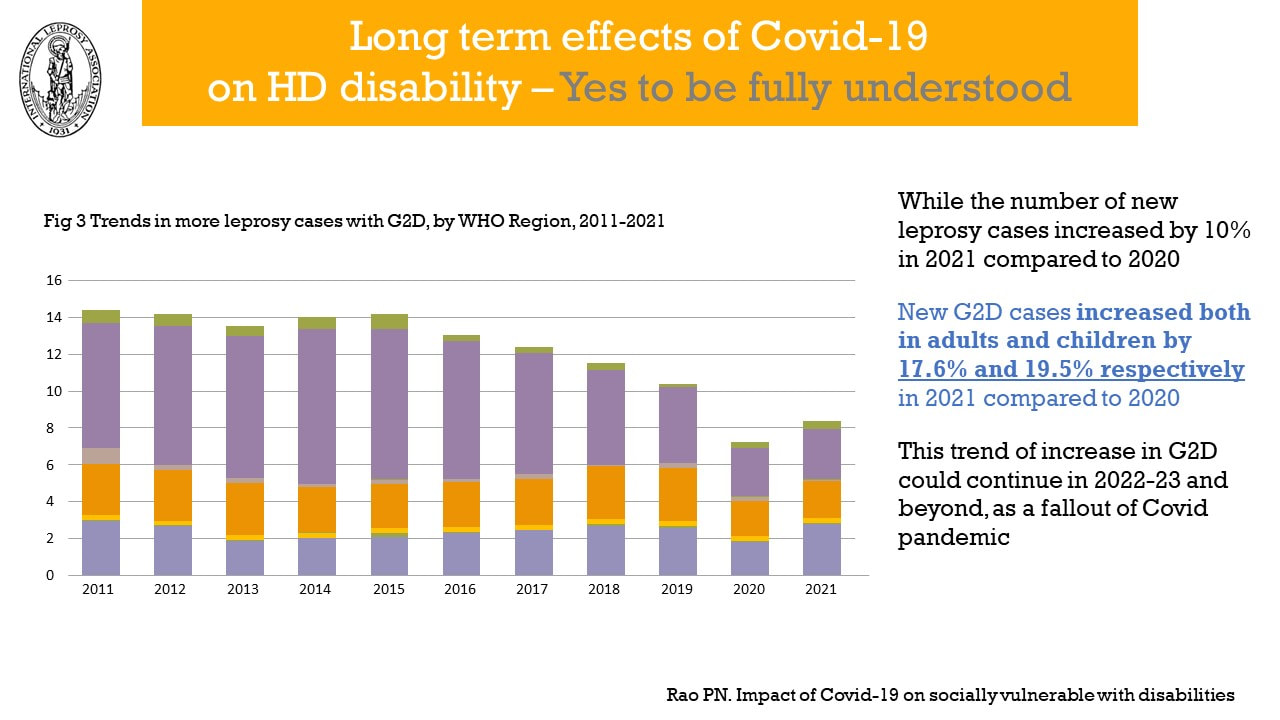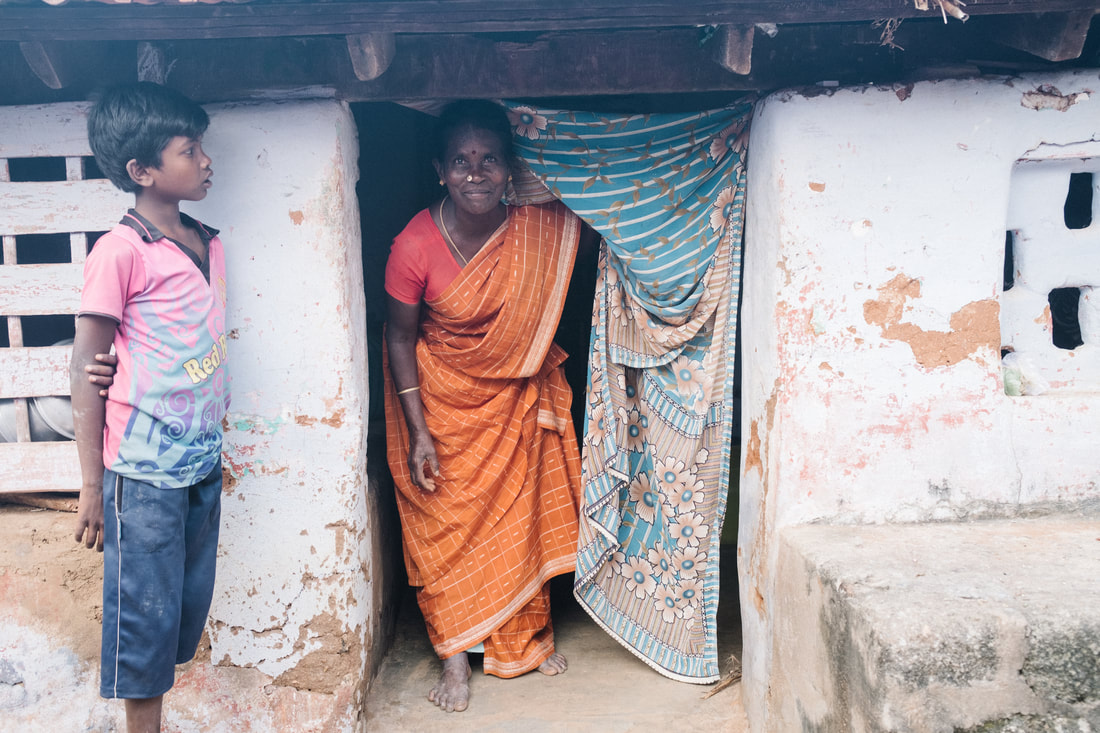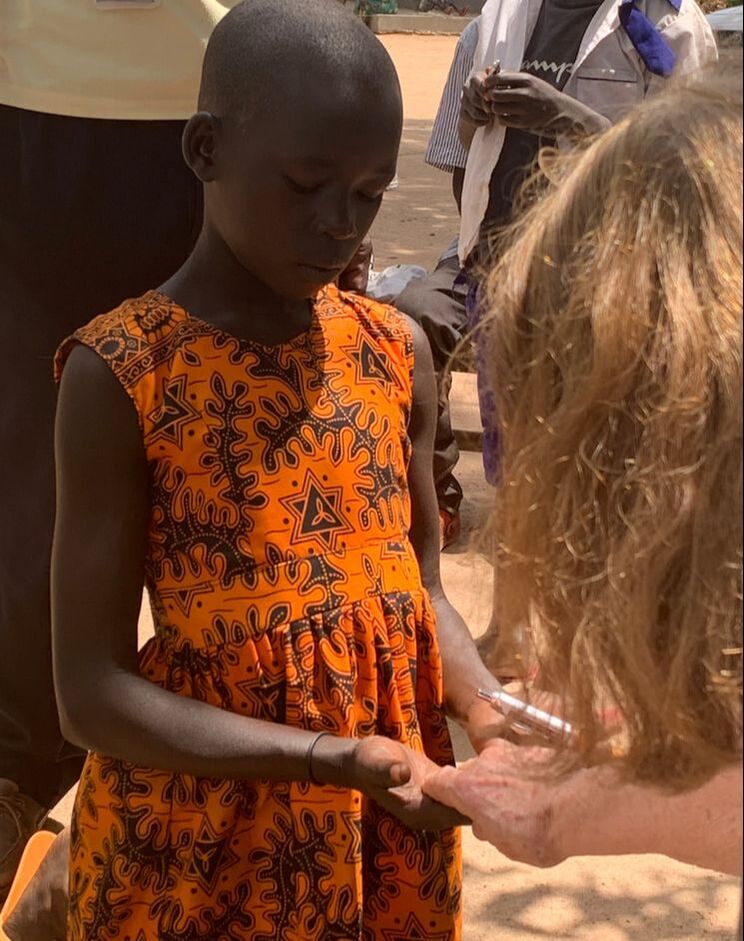NEWS UPDATE
St Francis Leprosy Guild calls for more Active Case-Finding to stamp out leprosy disability on
World Health Day 2023
World Health Day 2023
7 April 2023, London, UK: St Francis Leprosy Guild calls for more Active Case-Finding to stop the disability caused by leprosy that is suffered by millions worldwide*. Leprosy causes more physical deformity than other infectious diseases.**
Every year the World Health Organization reports on leprosy statistics collected throughout the year. These statistics include the number of people diagnosed with Grade 2 Disabilities (G2D) or visible disabilities. G2D develop if a diagnosis of leprosy and treatment for the disease are delayed.
In the 23 WHO-designated Global Priority Countries (where the majority of people diagnosed with leprosy are found) twelve of those countries reported more G2D in 2022 than in previous years***. The increasing number of people diagnosed with G2D shows a reverse in a declining trend seen in previous years.
Every year the World Health Organization reports on leprosy statistics collected throughout the year. These statistics include the number of people diagnosed with Grade 2 Disabilities (G2D) or visible disabilities. G2D develop if a diagnosis of leprosy and treatment for the disease are delayed.
In the 23 WHO-designated Global Priority Countries (where the majority of people diagnosed with leprosy are found) twelve of those countries reported more G2D in 2022 than in previous years***. The increasing number of people diagnosed with G2D shows a reverse in a declining trend seen in previous years.
The most likely explanation for the increasing number of people diagnosed with G2D is COVID-19" said SFLG's Chief Executive Officer, Clare McIntosh. "We know from our partners who work in countries where leprosy is endemic, that reduced healthcare provision during the pandemic, meant that fewer people were diagnosed with leprosy and treated. The delayed diagnoses enabled the secondary hallmarks of leprosy - terrible disability - to develop. |
If left undiagnosed, leprosy attacks nerve endings, destroying the ability to feel pain and injury. This lack of sensation makes patients susceptible to developing ulcers and infections. Over time, if left untreated, these ulcers can lead to the loss of fingers, hands, toes, and feet. Even those treated for leprosy and who are no longer infectious, can still develop ulcers over their lifetime. Leprosy can also cause blindness, facial disfigurement and the clawing of hands and feet.
What is more shocking, is that visible disabilities were diagnosed in 368 children last year.*** These children's lives will be permanently affected by preventable leprosy disability and the stigma it causes.
I strongly urge all leprosy-related organisations, such NGOs, research institutes or national governments, to seek out, diagnose and treat people with leprosy to prevent these terrible disabilities from developing and especially in children."
|
At the Vatican Symposium on leprosy held in January this year, Dr Narasimha Rao said that those with disability found it harder to access critical supplies and medical support during the pandemic. He showed the following slides.
|
Karuppayaa, Puliyampatti Village, near Dindigul, Tamil Nadu, India
Karuppayaa caught leprosy when she was only eight years old. Out of tradition, she was forced to marry her mother's brother. She bore him three sons then he left her because she had leprosy. She brought her sons up alone.
These days her left hand has lost its feeling and her fingers have been damaged over the years, resulting in her fingers shortening. She has had some reconstructive surgery and now works in farming in the paddy fields, plants seedlings, weeds, and rears cows. She said that she cannot work as well as the others because of her hand, but at least she is employed. Thankfully, her employer understands that she might be a little slower. Her family doesn't help her though; neither hers nor her husband's family talk to her. She said that when her sons got married, their father visited, but he doesn’t stay in touch with her or them.
This house was built in October 2022 by St Joseph Hospital, Dindigul (which is supported by St Francis Leprosy Guild).
Karuppayaa caught leprosy when she was only eight years old. Out of tradition, she was forced to marry her mother's brother. She bore him three sons then he left her because she had leprosy. She brought her sons up alone.
These days her left hand has lost its feeling and her fingers have been damaged over the years, resulting in her fingers shortening. She has had some reconstructive surgery and now works in farming in the paddy fields, plants seedlings, weeds, and rears cows. She said that she cannot work as well as the others because of her hand, but at least she is employed. Thankfully, her employer understands that she might be a little slower. Her family doesn't help her though; neither hers nor her husband's family talk to her. She said that when her sons got married, their father visited, but he doesn’t stay in touch with her or them.
This house was built in October 2022 by St Joseph Hospital, Dindigul (which is supported by St Francis Leprosy Guild).
I never fail to be saddened by leprosy disability. Whether it's a person with clawed hands, drop foot, lost fingers and toes or blindness - it's preventable and it all adds to the terrible burden of leprosy. Even though we've had a cure for leprosy since 1980s, a late diagnosis means that disabilities that will last a lifetime may develop. For this reason alone, we will always advocate for the early diagnosis of leprosy.
I don't think that we will see a real end to leprosy in our lifetime, unless we achieve Zero Disability. SFLG's Chief Executive Officer, Clare McIntosh
SFLG’s TRACE operating strategy is putting an emphasis on Active Case-Finding and early detection followed by quick effective treatment, reflecting new global approaches in the ongoing fight against the disease. Read more about TRACE.
References
* 3-4 million people are living with visible impairments or deformities due to leprosy page 10, WHO 2021-2030 strategy
**WHO Weekly epidemiological record 4 September 2020
***WHO Weekly epidemiological record 9 September 2022
* 3-4 million people are living with visible impairments or deformities due to leprosy page 10, WHO 2021-2030 strategy
**WHO Weekly epidemiological record 4 September 2020
***WHO Weekly epidemiological record 9 September 2022
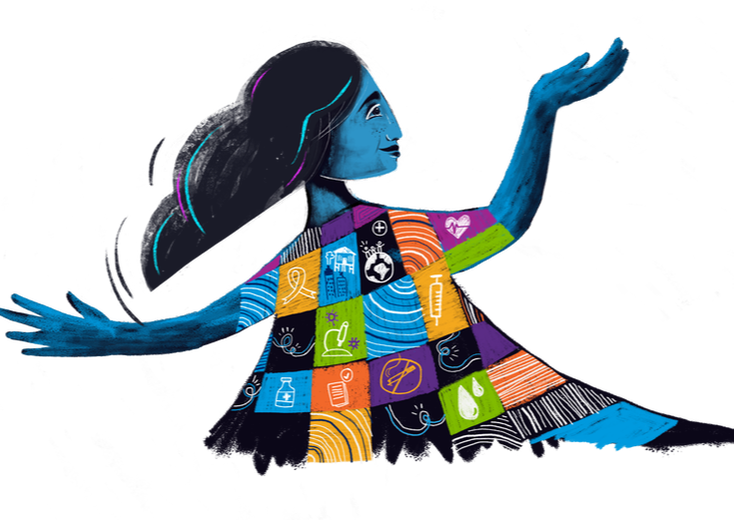
About World Health Day
World Health Day is a global health awareness day celebrated every year on 7 April, under the sponsorship of the World Health Organization, and other related organizations. World Health Day is observed by Member States of the World Health Organization.
In 1948, 75 years ago, the WHO held the First World Health Assembly.
World Health Day is a global health awareness day celebrated every year on 7 April, under the sponsorship of the World Health Organization, and other related organizations. World Health Day is observed by Member States of the World Health Organization.
In 1948, 75 years ago, the WHO held the First World Health Assembly.
For other information or interviews please contact:
Clare McIntosh
Chief Executive Officer
St Francis Leprosy Guild
London W10 6EJ
Tel: +44 (0)7754 592240
Email: [email protected]
Clare McIntosh
Chief Executive Officer
St Francis Leprosy Guild
London W10 6EJ
Tel: +44 (0)7754 592240
Email: [email protected]


